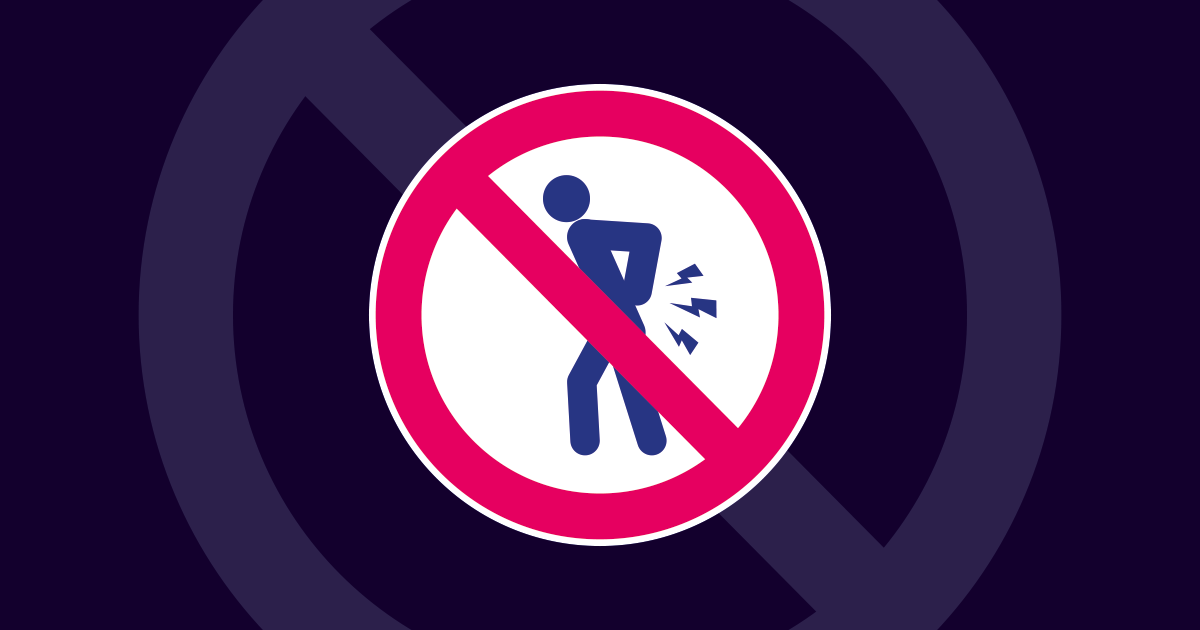10 Simple Tips How IT Admins Can Avoid Back Pain (and How We at Paessler Do It)
 Originally published on May 03, 2017 by Fabiano Ferrari
Originally published on May 03, 2017 by Fabiano Ferrari
Last updated on March 03, 2022
•
8 minute read
Almost everyone has already suffered or suffers from back pain after an exhausting work week. Stress, bad habits, excess weight, poor posture and lack of exercise are the most common factors that contribute to this. Below you can find our top ten tips for avoiding back pain.
- The office chair you use is just as important as the desk you work at. Be sure to buy a chair (or ask your employer to provide it) that includes lumbar support for the lower back and padded arms, and that is adjustable so that you can raise or lower the seat to a position that fits better to your desk or computer. Sit upright, keep your feet firmly on the floor and make sure your forearms are resting on the arms of the chair. You will feel more comfortable and the arms of the chair will help prevent your arms from getting tired or bruised from frequent computer keyboard or calculating machine use.
- Lighten your wallet/move your smartphone. Sitting on an overstuffed wallet or your phone may cause discomfort and back pain. If you are going to be sitting for a prolonged period - while driving, for example, move your wallet and phone out of your back pocket.
- Quit smoking. Yes, we know, it's difficult. But smoking reduces blood flow to the lower spine, which may contribute to degeneration of the vertebral disc. If you want to avoid chronic back pain, say goodbye to tobacco.
- A little walk is good. In a modern office environment, it's easy to be a bit lazy and stay sitting all day. Let's admit it: we sometimes avoid getting up from the chair. It's common to ask someone who is passing by your desk to take a device to another room for you, or when someone sends an email asking for help, to respond by email even when that person is only 2 desks away. But it's time to change those habits if you want to prevent back pain. Try to move around and get up from time to time, to change the position, stretch your legs and move a bit. This doesn't mean you're going to walk around the company and neglect your work, but rather than answering online, get up and walk to your colleague's desk and then return to yours. The same goes for when you have a more detailed subject to discuss: go in person instead of using the phone.
- Stretch those legs, and your back. Do not spend all day sitting in an office chair. Get up every 20 minutes or so, walk a little and stretch your legs.
- Observe body mechanics guidelines when you get up and down. If you need to lift or move something heavy like a server cabinet, spare parts, or network equipment, do this safely. Find a partner to share the load. Instead of pulling or lifting a heavy object, push it.
- Reduce stress. There is a strong link between stress and spinal pain. The body's response to stress can be muscle strain in the back, which can cause painful spasms. In managing chronic back pain, it's critical to reduce stress as much as possible, even if that means turning off the smartphone after work, going to a therapist, learning relaxation techniques, or exercising more regularly. Managing stress well can help prevent back pain from occurring.
- Keep bones strong and healthy by taking calcium, vitamin D, and exercising. The spine has 33 of the 206 bones in our body, and overall health is linked to bone health. To reduce the chance of suffering from osteoporosis, check with your doctor if you need to take calcium and/or vitamin D supplements. Exercise regularly. Walking, stretching, yoga, pilates and bodybuilding (under guidance) trigger an increase in bone density which is very beneficial to prevent pain in the spine.
- Moderation! If you do not exercise frequently, do not overdo sports during the weekend! Sometimes, less is more!
- Sleep well (and enough). Your mattress should be in top condition and be neither too soft nor too hard. If you're prone to back pain, talk with your doctor about the best sleeping position. Sleeping on your side with your knees pulled up slightly toward your chest is sometimes suggested. Prefer to sleep on your back? Then put one pillow under your knees and another under your lower back. Sleeping on your stomach can be especially hard on your back. If you can't sleep any other way, place a pillow under your hips.
At the Paessler HQ, we offer all employees physiotherapy sessions, physical activities in our own gym, and training to prepare for races. Paessler recently won the award for fittest company in the category small-medium size company in our region for the third consecutive time!









